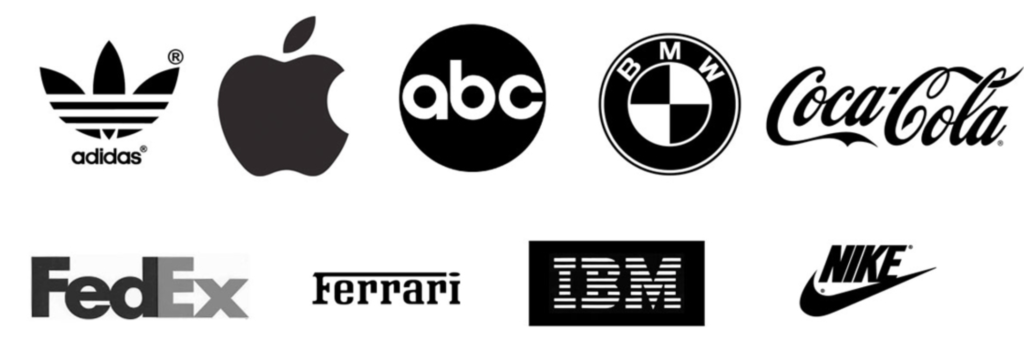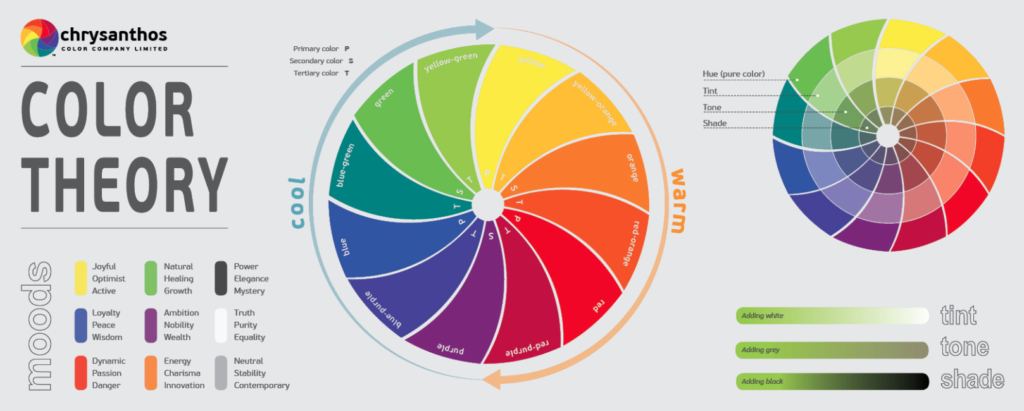As a business in 2019 you know the importance of having a website, but simply having a page online won’t cut it. Your website needs to stand out and and be an effective tool for turning browsing eyes into paying customers. Here are some tips for making sure your website is up for the task.
Review Brand Identity
Before even opening a web browser you need to examine the quality of your brand identity. Having a strong brand Identity will not only give your website an upper hand but your company as a whole. Here are some things to consider.
Logo
Can it be resized? – We are no longer just seeing logos painted on the side of buildings and covering giant billboards, we are seeing them on tiny screen that fit in our pockets. Make sure your logo is legible and functional when shrunk down to mobile sizes.
Does is work in a single color? – Having a fancy logo is fine but having the ability to simplify it down to a single color will ensure its effectiveness no matter where it goes.
Is it unique to you? – Logos are a dime-a-dozen these days, but not every logo is effective. It’s important that your logo is unique to your business and target demographic. This can be as simple as a customized icon or typeface. The easier it is to remember the better.
Colors
Choose your palette. – There are no concrete rules when selecting colors for your brand, but there are a few things to consider. First off examine what colors other companies in your field are using and try to avoid using the same color palettes. This will set you apart from them and amplify your visibility. Another thing to consider is what emotion you want to evoke with your brand. There are a lot of things to consider when dealing with color science and it is worth doing a little bit of research to choose a color that will support your goals as a business.
Keep it simple. – Once you have a primary color selected it’ is a good idea to have a couple other colors that can be used to support your prime color. There are many ways to build a color palette but a safe bet is to use shades (darker) or tints (lighter) than your prime color, as well as complimentary colors that can be found exactly opposite your prime color on a color wheel. Once you have chosen your color palette of 2 to 5 supportive colors, make sure you are using your new palette consistently in all of your marketing materials. Tips on building a color palette here.
Fonts
Fonts are your voice. – There are thousands of font choices these days but not all of them are good. When choosing a font it is important to remember that fonts give a voice to the words your write and it is important to pick a font that makes sense with your brand.
Keep it consistent. – To start with, choose a main font that can be used for headlines and a font that can be used for long form copy. These two fonts should work together and can make sure your brand has a consistent voice no matter who is writing your content. Check out some font tips here.
Messaging
Clarity is king. – When crafting your brand identity it is important to remember that the words you use are the most important part in connecting with your audience. When writing tag-lines and headlines for you company it can be tempting to write something that is cute and clever, but if it’s confusing at all people will not connect with it. The first step in crafting a powerful brand message is making sure you are are being as clear as possible. Your message needs to be able to communicate exactly what you do and how it’s going to make peoples lives better.
Tell a story. – From the beginning of time people have been connecting with the story of a hero going on great adventures and overcoming obstacles to achieve their goals. Your customers are also on this journey and your company has a great opportunity to position yourself as a guide to this hero so they can achieve their goals. To find out more about how you can use this story structure to craft your brands message, check out Donald Miller’s Building a Storybrand.
Plan Your Website
Build a Sitemap. – A sitemap is a flowchart visualization of every page of your website. Creating one of these will allow you to organize your website and think of a logical place for you to put each piece of content on your website. It’s a simple step but can be incredibly helpful in the long run. Gloomaps and draw.io are a couple free online resources to get you started with your sitemap right away.
Plan your Content. – The text on your site is the meat and potatoes of your website. When someone visits your website they are in search of answers and it is important that you are supplying the correct ones. It is important to not overwhelm the viewer with information but you want to make sure they aren’t leaving your website quickly because they didn’t find what they need. Make sure you cover what your services and products are, how that services and products will benefit the customer, and how they are going to purchase.
Plan the UX (User Experience). – Make sure your website is user friendly. You want your website easy to navigate and easy to understand. This includes making sure your main Call-To-Action buttons stand out and important information is not buried in a maze of menus. This is finding the balance of simplicity and usefulness of your website.
Design your website. – There are a few benefits to mocking up how your website will look before your build it. First off it allows you to visualize how all of the content will fit on the page giving you the opportunity to make sure your content isn’t visually overwhelming or visually thin. It allows you to get feedback from others on the look and feel of your website before you spend hours building the real thing. also, it allows you to have a master copy of your website no matter how you decide to build it.
Draw it by hand. – Yes, it might sound crazy to draw your website by hand but this can be an incredibly flexible way to map out where you would like each section of content without dealing with complicated softwares. You can as detailed with this as you like but the main purpose is to make sure the your content is in a visually appealing order and makes sense from top to bottom.
Use a design software. – There are loads of powerful design tools out there these days such as Adobe Illustrator, Adobe XD, Sketch, and InVision. These tools are powerful and each contain endless possibilities. If you have the time and the cash any of these softwares would be great for you. If you are looking for something a little simpler and cheaper check out Balsamiq Mockups, Mockplus, or Wireframe.cc. These tool are browser based and and lot easier on the wallet while still packing in plenty of features.
Build Your Website
Now that you have an incredible brand identity and powerful content ready to go it’s time to start building your website. There are a couple ways to get this done.
Builders & Templates. – If you are just getting started, a diy approach might be for you. There are many website builders out there, the most popular being Squarespace and Wix. These builders are incredibly easy to use and can be effective when paired with a strong brand identity and content. This downfall of these builders is you are usually limited to the design templates provided and have limited features. If you are just getting started builders are a functional and affordable option
Custom Websites. – Building a customized website is the optimal option if you are wanting a fully functional website without any limits. If you are web savvy it is possible to do this yourself or you can collaborate with a web design team that will partner with you on the vision for your site and can build it to fit the needs of your business.
Manage Your Website
Updating Content. – Keeping your website content updated as information changes is key to keeping your website relevant and useful.
Keeping it Fresh. – Revisiting the design of your website each year is a good way to stay up to date with design trends as well as keeping it exciting for returning viewers.
Be Found. – It’s pretty pointless to have a great website if there isn’t anyone visiting it. Make sure your website loads quickly and you are following current Search Engine Optimization guidelines. To learn more about optimizing your website, read our Ultimate Guide to SEO here.
Creating an effective website can be a daunting task but if you focus on strong brand identity and quality content you will be far ahead of the majority of websites out there.
Looking for some assistance with your website project? Schedule a free consultation with Rinard Media today.



